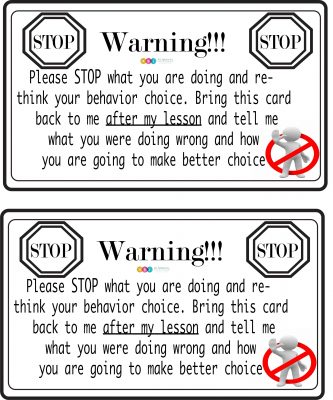I began as an assistant teacher for Art Sphere Inc. only about a month ago, and naturally have been in need of some guidance. One aspect of teaching I have found especially difficult has been classroom management. Luckily, I am not alone in my struggles, and after researching articles with tips from other teachers, as well research-based methods, I have found a healthy overview of classroom management advice. These are the tips I found most consistent and/or useful for beginner teachers like me.
1. “1, 2, 3, eyes on me”
This little rhyme is certainly a classic, but even more it is an essential classroom management technique. Not talking over students was advice I saw repeated several times in my research, and not following it was one of the first mistakes I made. Only giving directions when the class is quiet communicates the importance of the directions, and your authority. Additionally, if you do this at the beginning of every activity it can reduce chaos during transitions and help establish routine.
2. Establish routine
Establishing a routine or schedule that your students can expect reduces opportunities for chaos and confusion. For many students, more structured time helps them focus on the task at hand, and awareness of the structure and schedule of the class can help them channel their energy when they feel restless, upset, or disoriented.
3. Anticipate problems and develop creative solutions
Observing your class and identifying triggers for misbehavior to focus on can make a big difference in the overall classroom management. Transitions tend to be the most difficult time for classroom management, so try to find ways to entertain, engage or even surprise your students with your methods of classroom management.
4. Be honest
Being honest with your students helps build trust and relationships between you and your students. Publicly announcing classroom management goals and displaying classroom rules visibly also helps encourage clarity and accountability.
5. Engage your students
A lot of times students act out because they want attention or they’re bored, you can prevent both of these issues by engaging your students in the lesson, activities, or even classroom maintenance and management. You can better engage your students by building anticipation for the lesson, gamify the lesson, and cater lessons around their interests.
6. Empower your students
If students feel that they have a voice in the classroom and their education, they are more likely to be motivated to prioritize their schoolwork and a pleasant classroom environment. This can be accomplished by giving them choices (like doing an assignment as classwork or homework) and talking to as many students as possible. Learning all of their names and using them frequently can also be helpful, and calling on each student at least once per lesson or day can help you avoid accidental favoritism.
7. Praise your students
Praise your students when they behave well and/or take initiative. Praise students for their actions and effort. Studies have shown that saying a student is “smart” can be labeling, whereas complimenting them on specific things (like “good job understanding those concepts”). Other suggestions to consider include periodically calling parents about good behavior, and following a 4:1 ratio for notes of praise and corrective statements.
8. Address behavioral problems as they occur
Addressing issues immediately can prevent a situation from escalating, and communicate to the student most effectively that their behavior is inappropriate. However, you should avoid relying on public humiliation to correct behavior. Quickly, politely, and non-verbally, when possible, correct behavioral issues. When possible and necessary, also try to speak with students in private.
9. Use props/tools
Using props and tools facilitates non-verbal communication and can even make your job easier. Some recommended tools include a visual timer, the app Class dojo, our own stop sign (below), which can be used to help call out behavioral issues as they occur. A visual timer can be helpful for students who have trouble telling time, and keep the expectations of their performance consistent and understood. Class dojo is an app for smartphones and computers, and can help teachers record specific student behaviors.

10. Forgive
Many of the articles written by teachers stressed the importance of building trust with your students. So much about teaching is also a social experience, and the inherent power imbalance of your relationship with your students can cause distrust and animosity from them if they feel you hold them to unreasonable standards that do not apply to yourself. So, since you’re likely to mess up (I know I certainly have made plenty of mistakes after teaching just 10 short classes), you should expect that your students will too, and be ready to forgive them for it.
Those are the pieces of advice I found most enlightening and helpful, but I would encourage all new teachers to research this too to learn all the wisdom from more experience teachers on and offline. I hope this overview was helpful, and I wish all of my fellow beginners luck on their journey to learning how to be the best educators they can be!

